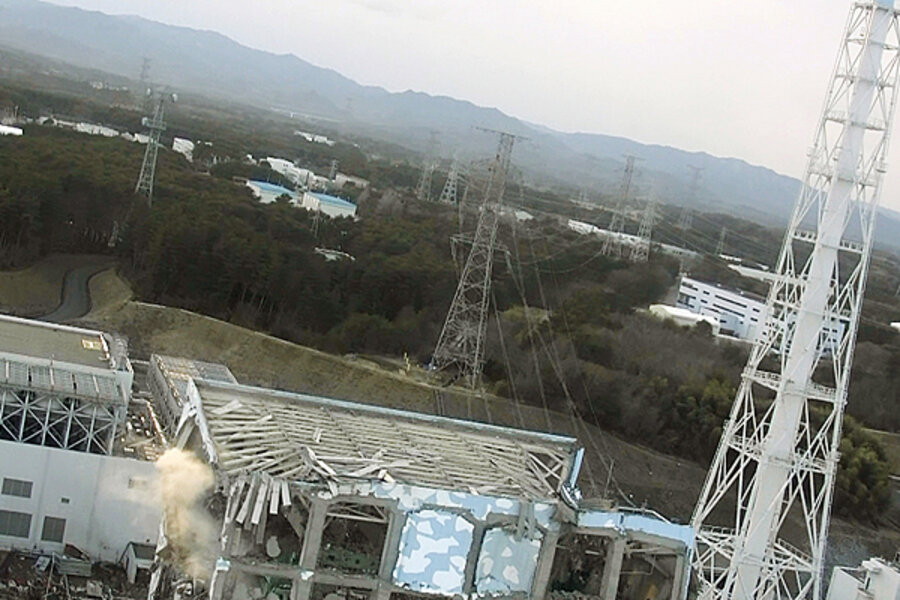Why US differs with Japan over dangers of stricken nuclear plant
Loading...
| Washington
As the Japanese nuclear crisis appears to deepen, US and Japanese authorities have begun to give different accounts of the situation at the stricken Fukushima I nuclear plant. They have also started to differ on the size of the danger zone. US Nuclear Regulatory Commission Chairman Gregory Jaczko recommends that American citizens in Japan stay 50 miles from the plant, while Japan has evacuated citizens within a 12-mile radius and told those within a 20-mile radius to stay indoors.
What’s causing this split? Does the US have different sources of information than the Japanese do, or are US officials interpreting the same information in a different manner?
Right now it seems the latter scenario is the most likely one. The US does have its own experts on scene: Mr. Jaczko said Wednesday that NRC staffers are working alongside Japanese counterparts in Japan to interpret data. And there are reports that the US Air Force is flying Global Hawk unmanned aerial vehicles over the scene to take pictures and gather other measurements.
Japan nuclear crisis: Nuclear terminology 101
But it would be startling if the American government were not sharing crucial numbers with Japan, a staunch ally in crisis. Most likely, the two nations are simply looking at the same things differently.
That’s what White House spokesman Jay Carney kept insisting on Wednesday when pressed by reporters as to whether the US was now telling its citizens to ignore Japanese government advice.
The US position “is based on our independent analysis of the situation there,” said Mr. Carney at a briefing.
Some publicly released data tend to support the US position. For instance, NRC head Jaczko said Wednesday that it appeared no water was left in spent-fuel pool No. 4 at Fukushima I, and that the spent-fuel rods in the pool might now be releasing radiation into the atmosphere – an assertion the Japanese denied.
But the temperature in that pool indeed is much higher than it is in the other spent-fuel pools, according to numbers from the International Atomic Energy Agency.
On Wednesday, it was about 183 degrees Fahrenheit at spent pool No. 4, said the IAEA. That is very close to the point at which any remaining water would boil off, in any case.
The other pools were about 50 degrees Fahrenheit cooler. Data for Thursday were not yet available.
Whether there is any water left in pool No. 4 or not, the condition of the spent-fuel pools is evidently dire, as Japan on Thursday began a last-ditch measure: attempting to drop water into them from helicopters.
In addition, US officials Thursday said they continue to stand behind their statements as to how far American citizens should stay from the plant. If anything, they toughened their stance, warning against nonessential travel anywhere in the country and authorizing the first evacuations of Americans out of Japan.
Those eligible for the voluntary evacuation included family members and dependents of US personnel in Tokyo and several other Japanese cities.
“This is a very serious problem with widespread ramifications,” said Secretary of State Hillary Rodham Clinton during a visit to Tunisia, according to the Associated Press. “There will be a continuing evaluation. This is ... a minute-by-minute analysis, and we’re doing everything we can to support the Japanese and their heroic efforts in dealing with this unfolding disaster.”





